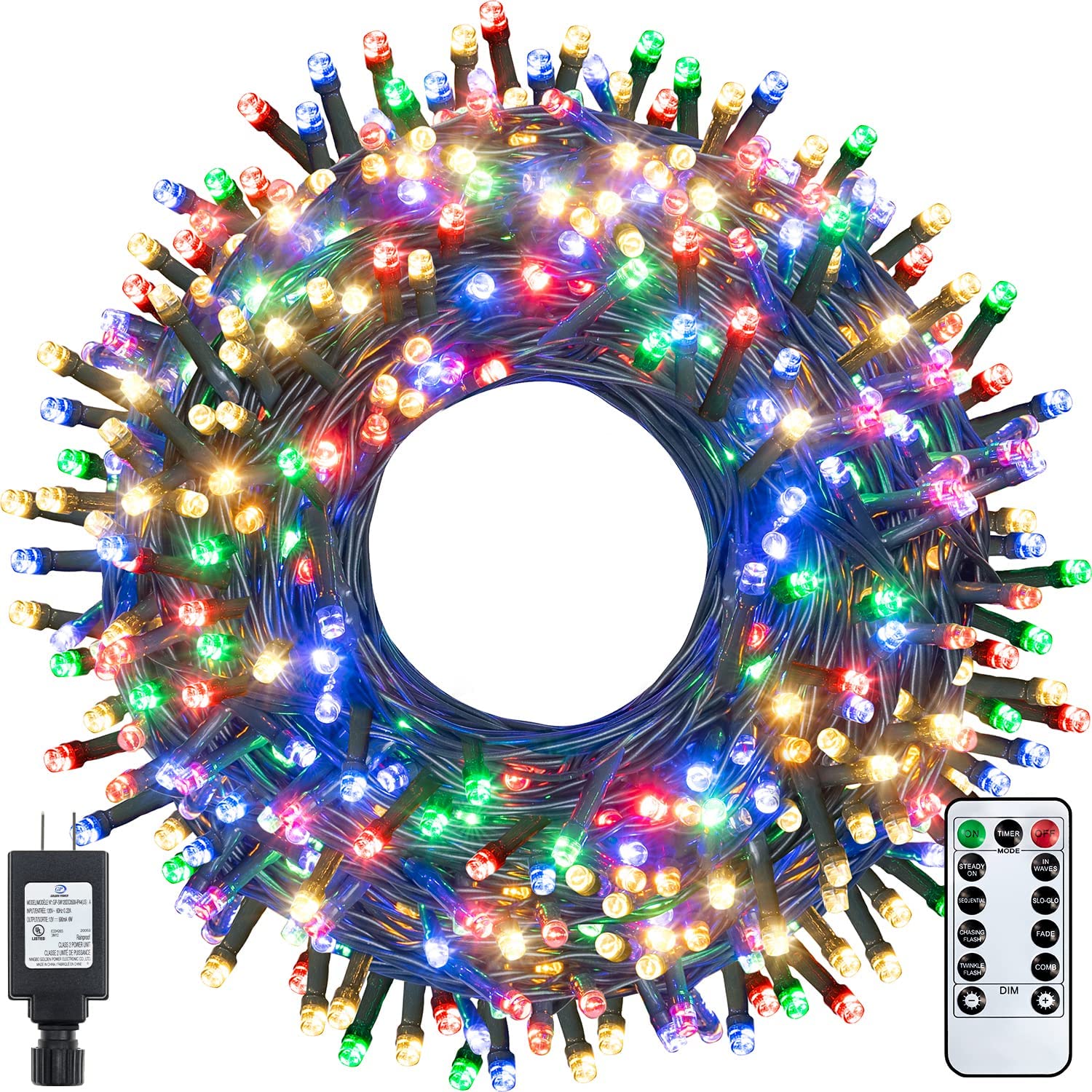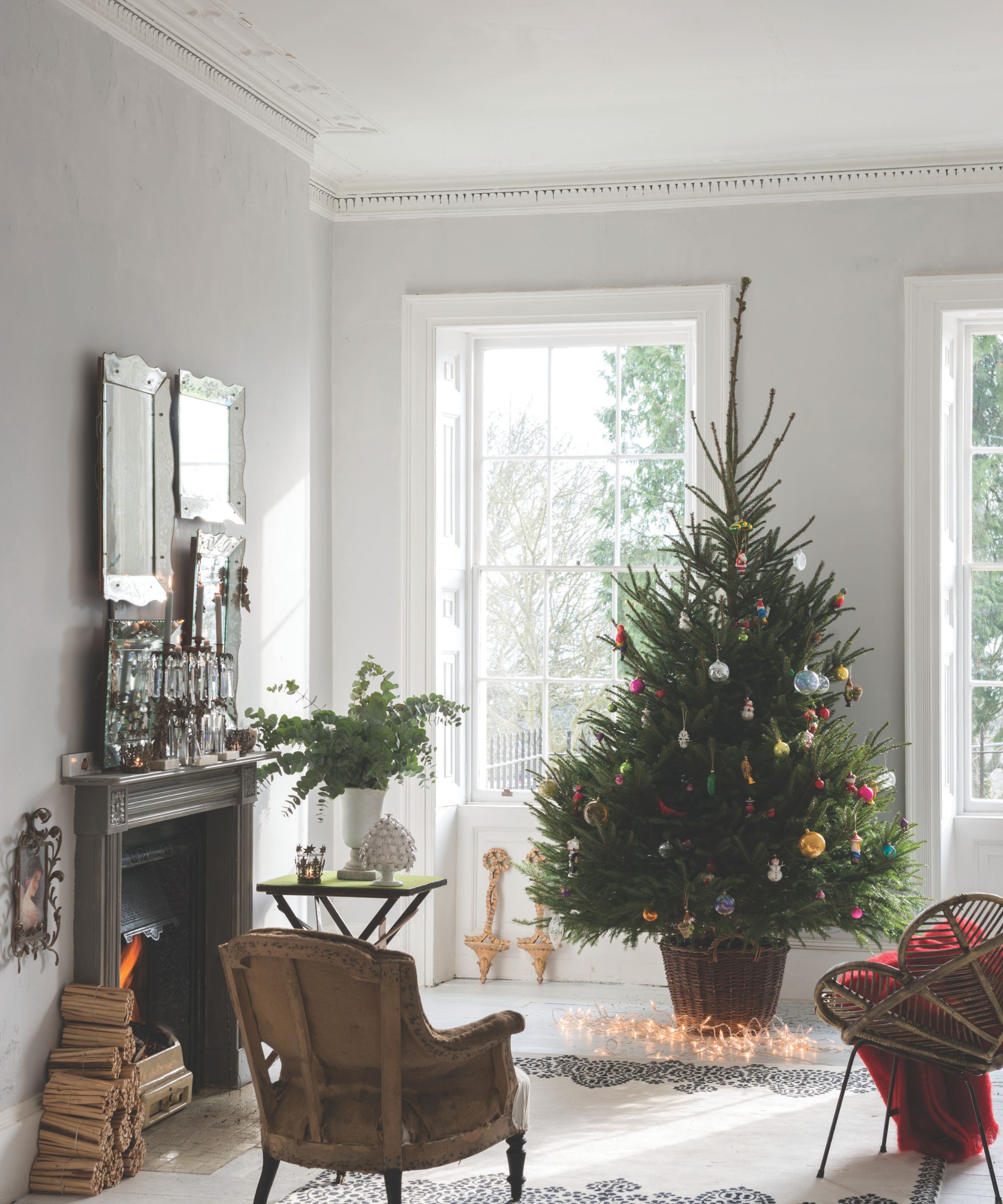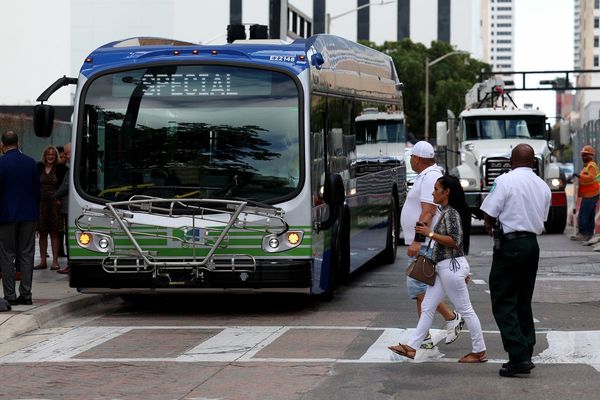
One of the best and most magical parts of Christmas is the twinkling lights – adorning porches, embellishing trees and wrapping staircases with a sparkling glow. What is less enchanting, however, is the cost of running these lights, which you may not even be aware of.
Luckily, if you are wanting to keep an eye on your energy consumption this Christmas, there are a few changes you can make to save money while still celebrating the season.
So, here we spoke to our electrical and energy experts for their tips on how to cut energy bills, without compromising on your festive display.
How much do Christmas lights cost to run?
The good news is that despite their usual abundance, Christmas lights typically use very little energy each year – even if you turn them on December 1st and use them nightly throughout the month.
Les Roberts, energy expert at Bionic, explains, 'To find the running cost of your Christmas lights, you need to know the wattage and how much your electricity costs per Kilowatt Hour. Your Christmas lights should have their wattage on the label, in the instructions, or on the box. LED lights will have a much lower wattage, so will use significantly less energy,' the same reason we recommend LED bathroom lighting ideas.
Then, Roberts explains, once you have the wattage of your lights, divide it by 1000 to find the kilowatt hours (KwH). 'This is how much energy the lights will use in the hour,' he advises. 'Next, you need to find out your energy rate per Kw by looking at your latest energy bill. You can then calculate the running cost of your lights.
'For example, if your lights run on five watts, divide five by 1000 to convert to kilowatt-hours, giving you 0.005 kWh. If you want to use the lights on your Christmas tree for the evening for, say, three hours, multiply 0.005 by three to get 0.015kW (your lights will use 0.015kW in those three hours). If your energy costs 16 cents per kWh, multiply 16 by 0.015 and you will have the cost to run your lights, which is 24 cents for three hours.'
To simplify that, the calculation is: [wattage/1000 x time in hours] x cost per kWh in cents = cost to run Christmas lights
'It's worth remembering that whilst incandescent bulbs can use around 40 watts for a 100-light string, the same number of LED lights will run on around 25% of this wattage, so your running cost will be cut drastically,' Les adds.
All prices correct at time of publication.

Brighten up your holiday home with a grand display of lights. Wrap these connectable LED lights around your tree or hang them from ceilings and banisters for a festive glow.

These Christmas lights have a handy timer function, and can be used both indoors and outdoors. Up to five sets can be connected safely, meaning they're perfect for larger festive displays.

Love them or hate them, these multicolored Christmas lights are a fun way to add a festive flair to your space. With 400 LEDs spanning 132 feet, these are sure to make a big impact, even on a budget.
How to save money on Christmas lights
Whether you are looking to save on your indoor Christmas lighting ideas, or are wondering whether your outdoor Christmas decor ideas are worth illuminating this year, these are the tips our experts recommend to save money at home.
1. Work out how many lights you really need

We know how tempted it is to cover your tree in lights, but working out exactly how many you need for your Christmas tree ideas will help you save money by avoiding excess bulbs. Luckily, this is easy to work out, says Pablo Diaz Barriga, from Balsam Hill.
'Generally speaking, an average seven-foot tree of medium density will need around 900 lights,' he advises. 'For a brighter look, you might want to add more, or use less for lighter coverage.'
Remember, there are plenty of other ways to make a Christmas tree look fuller, and more luxurious, which don't utilize any energy – like adding oversized baubles or bows.

These vibrant baubles are a playful way to bring color to your Christmas tree, without any added energy costs.

If you prefer traditional decorating ideas, these large baubles will add a touch of sparkle to your tree.

For a high impact look, this silver tinsel garland will beautifully reflect light – customers rate the sparkle it gives.
2. Opt for newer LED lights

As older Christmas lights tend to be made with iridescent bulbs, updating your lights to newer LEDs could save you money in the long run.
Christmas tree expert Diaz Barriga explains, 'Christmas wouldn’t be Christmas without a little sparkle, so finding the right lights for your tree should always be high on the festive to-do list.
'The main two types of bulbs you’ll find are incandescent and LED. LEDs may cost you a little more than traditional incandescent ones up-front, but you save in the long run as they use less energy and don’t need to be replaced so frequently.' After all, who wants to spend the festive season repairing faulty Christmas lights!

These gorgeous mini Christmas lights can be used both indoors and outdoors, and just require an electric power source, so you won't need to worry about changing batteries all season long.
3. Change the setting of your lights

Amazingly, Stephen Hankinson, energy efficiency expert at Electric Radiators Direct says that switching your Christmas light ideas to a different setting could cut energy use by up to a staggering 64 per cent.
'The most budget-friendly option is the "twinkling-flashing" setting,' he advises, 'which costs around 20 cents to operate for six hours daily, for two months over winter.'
On the other hand, using an always on or sequential setting instead can cost almost three times as much for the same daily usage over the same time frame.
You may also want to use a plug-in timer, such as the Indoor Mini 24-Hour Mechanical Outlet Timer available at Amazon, to ensure lights aren't forgotten about and left on for lengthy periods of time – which is a Christmas lighting mistake to avoid.
'You can make your Christmas lighting more energy efficient with timer plugs,' says Hankinson. 'These can be automated, so lights come on in the early evening and go off at bedtime, helping to prevent energy wastage by eliminating the chance of you leaving your lights on during daylight hours, or overnight, when they're not actually visible.'
4. Use solar powered lights outside

If you love creating a festive display with outdoor Christmas light ideas, Ava Pope, energy saving expert at Love Energy Savings, recommends using eco options from the best solar light brands.
She says, 'Many households love to extend their Christmas decorations to the outside of their home for the entire neighborhood to enjoy. This is when solar-powered Christmas decorations are a great energy-saving option.
'While buying new lights when you’ve got perfectly good ones sitting in a box seems wasteful, when it does come time to replace your Christmas lights, opting for solar-powered and going electricity free is a great way of cutting down on your energy bill at this time of year.'
However, Pope warns that most solar-powered lights require around six hours of direct sunlight to fully charge, but premium solar lights can achieve a full charge within just an hour of daylight.
'This means that even in the winter months with shorter daylight hours, you can benefit from the energy and cost saving of solar power.'
Solar lights are also a great option for Christmas light ideas for outdoor trees, allowing you to put the charging box high up and unobstructed by garden features and shadows. If you live in an area with inclement weather, it is possible to charge solar lights without sun, and our expert-led guide delves into the details.

These lights are easy to install with a 72 ft long string, perfect for wrapping round trees, staircases and windows.

These shatterproof, waterproof lights will look great in your yard all year round, or as part of your Christmas seasonal display.

These twinkling string lights take just four to six hours in direct sunlight to charge for ten hours of lighting at night.
5. Consider battery operated lights for smaller displays

Make use of the most essential household item to keep in your junk drawer – batteries.
As Connor Campbell, personal finance expert at NerdWallet says, 'If you have stashes of batteries hidden in drawers, then you should definitely make use of them for Christmas lights. This means that electricity from the mains power supply isn't being used, and if you use LED battery-powered lights, they will last longer than incandescent lights, saving you money on batteries int he long run.'
Battery-powered lights are also more convenient for decorating, particularly outdoors, as they give you freedom without worrying about connecting lights to the mains. Therefore, they're a wonderful option for smaller displays, such as Christmas window decor ideas, where rolls of fairy lights are unnecessary.
FAQs
Do Christmas lights use a lot of electricity?
Christmas lights typically only use small amounts of electricity however, given that many people use multiple sets of lights at a time across a home for hours at a time, it can add up. Typically, one 1,000-bulb set of lights uses 40 watts of energy, so, according to ElectricityPlans, a typical Christmas display ends up costing approximately $10 to $15 for incandescent lights, or around $2 for LEDS for the whole holiday season.
If you use solar Christmas lights, they will, of course, be free to run – making them the most cost-effective option, but they won't be as reliable, experts warn
These unusual outdoor Christmas lights are a gorgeous way to inject your displays with individuality.







